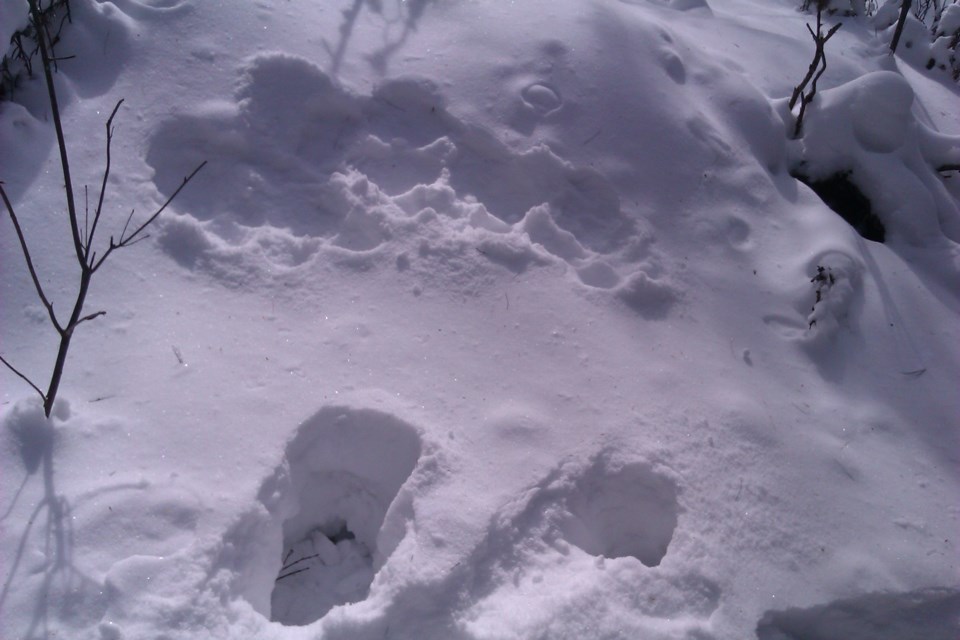Our snowshoeing expeditions take us far and wide, especially now that we can stay on top – well, nearly on top of the three to five feet of snow in the forest.
Every now and then, especially when climbing steep sections, the crust gives out and I have to crawl out of a deep hole. The extra pressure usually makes the crust collapse some more, until eventually I can use a couple of nearby trees to pull myself back to the top of the snowpack.
We have it easy. Not so for the moose we share the forest with. We crossed their trails several times on this week’s excursions. There are huge troughs through the deep snow – uphill, through thick forest and even thicker snow. Moose never stay on top of the crust.
Near the bottom of the hills we could tell the moose had been out lots early in the season. Their tracks remain as very widely spaced but slight depressions in the snow. A little way up the hill, the impressions were fresher, but still single steps filled in with snow. Halfway up the valley, the tracks were just a few days old, only a little snow filled in the now deep troughs.
Otters always make troughs in the snow as they slide along the lake, or down hills. They have short little legs and wide bodies. They stay on top of the crust. Moose have very long legs. Usually their bodies don’t touch the snow. Their feet always go right through the snow to the bottom. As the snow piles up in the narrow valleys, their feet drag with every step. Their bellies drag too.
By the time we got to the pond at the top of one steep narrow creek, there were very fresh moose tracks. A mom and her calf had crossed then stepped back into the bush. The prints were still watery wet where they went through to the slush on the relatively shallow snow on the pond. Likely they heard us coming up the creek and headed south. We veered north…they clearly have enough stress to deal with this winter without having to worry about people following them.
We continued up the valley, studying the moose tracks here and there along the way. The two of them have wandered all through the area we frequent in winter.
We came across tracks of various ages, especially in the gullies where red maple saplings grow. Some of the broken twigs were pale yellow of fresh munching, some dull grey from years past. This mother and calf have travelled up and down through the forest, rarely crossing their own tracks.
I always paused when we crossed the deep troughs of their travels. At the side of one of these were clear tongue marks, where the moose stopped for a drink of snow. Most of the winter animals eat snow. We know this because none of the tracks lead to the open water where the streams flow freely all winter. Amazing that moose can take in enough water to fuel those huge bodies just by eating snow.
Viki Mather has been commenting for Northern Life on the natural world and life in Greater Sudbury since the spring of 1984. Got a question or idea for Viki? Send an email to [email protected].
